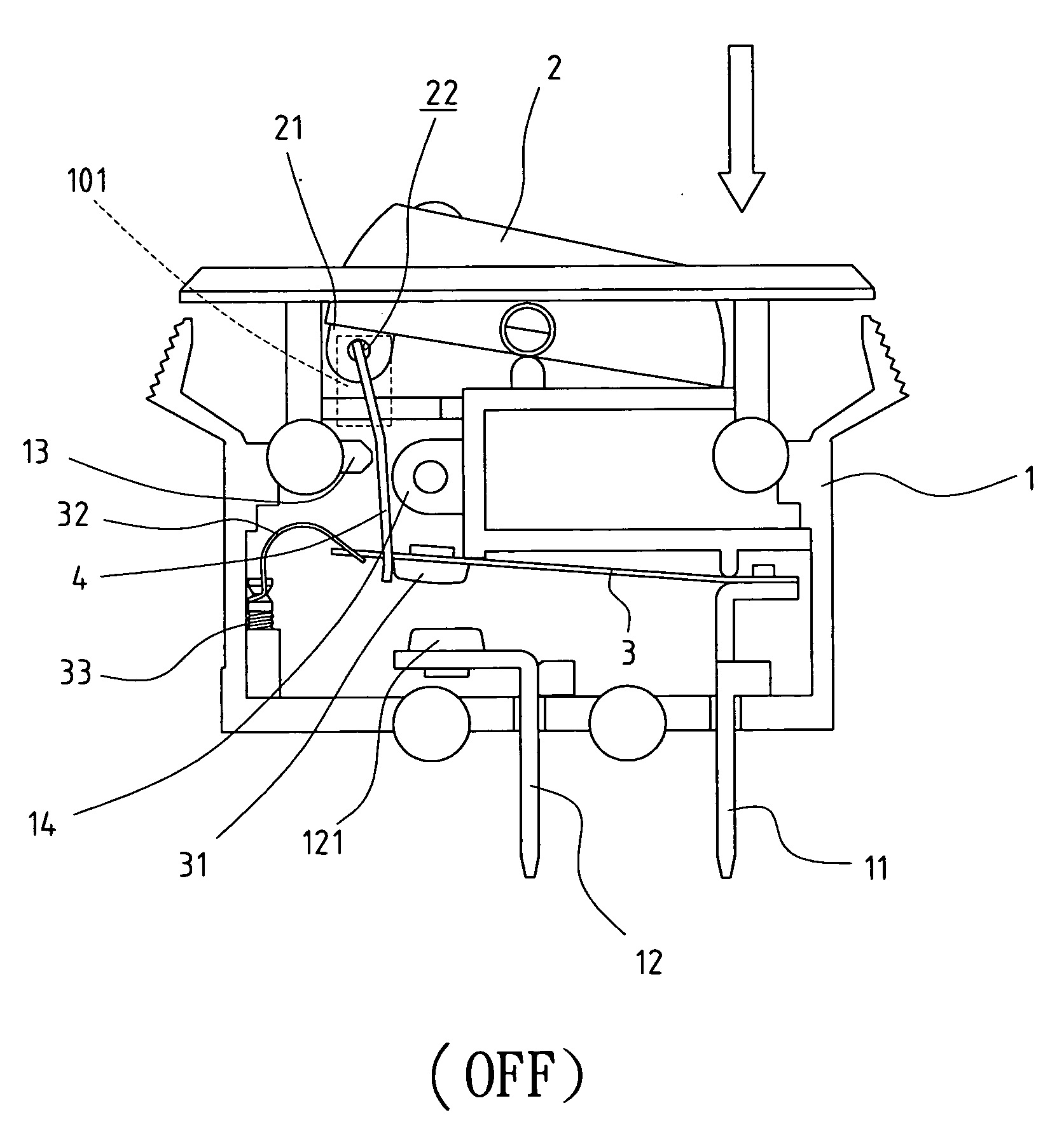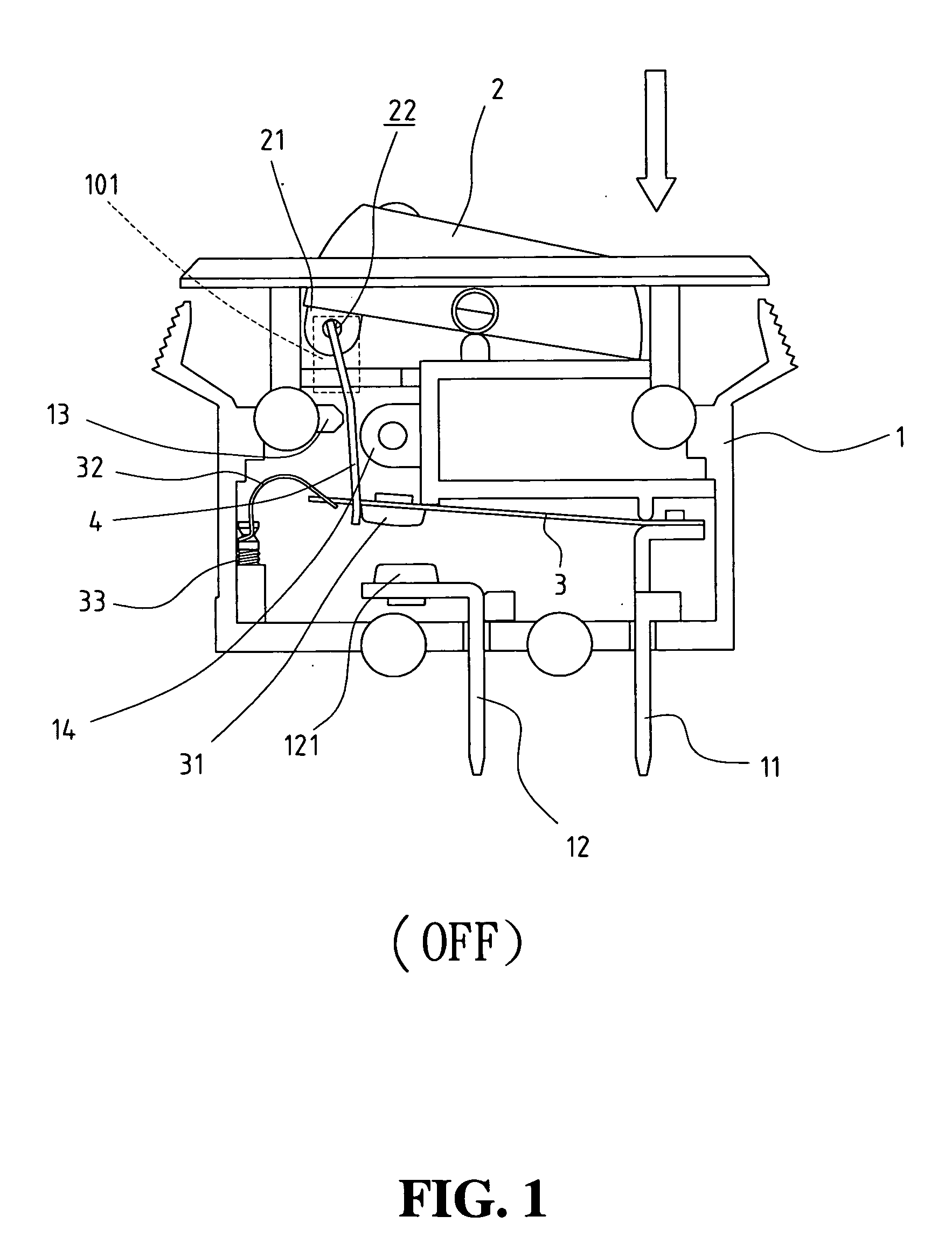Mechanism for ensuring bimetallic plate to be deformed without barrier
a technology of bimetallic plates and mechanical mechanisms, applied in the field of circuit breakers, can solve problems such as disasters
- Summary
- Abstract
- Description
- Claims
- Application Information
AI Technical Summary
Problems solved by technology
Method used
Image
Examples
Embodiment Construction
[0017]Referring to the drawings and in particular FIGS. 1, 2, 4, and 5, a circuit breaker in accordance with the present invention comprises a case 1 having an open top. A pushbutton 2 is pivotally connected between a front wall 10 and a rear wall of the case 1. The pushbutton 2 includes an extension 21 projecting from an underside thereof at an “ON” end of the pushbutton 2. The extension 21 has a hole 22 defined therethrough. A first terminal 11 and a second terminal 12 each have an end located in the case 1 and the other ends respectively extend through a bottom of the case 1. A first end of a bimetallic plate 3 is fixedly connected to the first terminal 11. A first contact point 31 is connected to an underside of a second end of the bimetallic plate 3. A second contact point 121 is connected to the second terminal 12 and located beneath the first contact point 31. As can be seen from FIG. 5, the bimetallic plate 3 is a long strip member which may be deformed when the circuit brea...
PUM
 Login to View More
Login to View More Abstract
Description
Claims
Application Information
 Login to View More
Login to View More - R&D
- Intellectual Property
- Life Sciences
- Materials
- Tech Scout
- Unparalleled Data Quality
- Higher Quality Content
- 60% Fewer Hallucinations
Browse by: Latest US Patents, China's latest patents, Technical Efficacy Thesaurus, Application Domain, Technology Topic, Popular Technical Reports.
© 2025 PatSnap. All rights reserved.Legal|Privacy policy|Modern Slavery Act Transparency Statement|Sitemap|About US| Contact US: help@patsnap.com



